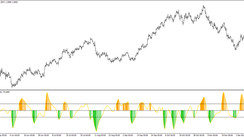Last Friday, the DXY US dollar index rose to its highest level in almost two years, hitting 98.80, the highest since May 2020, and ending the week up 2.1%, the strongest weekly gain in the past five years. The US dollar continues to strengthen against most major currencies against the backdrop of military actions in Ukraine, which increases the attractiveness of safe-haven assets, as well as against the backdrop of strong macro data from the US.
Thus, according to data published last Friday, 678,000 jobs were created in the US in February (the forecast assumed an increase of 440,000 jobs). The unemployment rate fell to 3.8% from 4.0% in January as employers continued to raise wages to keep their workers amid labor shortages. Thus, hourly earnings increased in February by 5.1% (in annual terms).
Although the U.S. non-farm payrolls report for February showed that the number of jobs is now 2.1 million below the level of February 2020, at this rate of growth, this gap will close around the middle of the year, economists say, and this against the backdrop of rapidly rising inflation is pushing the Fed to take more decisive steps to tighten its monetary policy. The next Fed meeting will be held March 15-16. As central bank chairman Jerome Powell recently pointed out, he could propose a 25 basis point hike to curb inflation, although the Fed will have to tread carefully given the situation in Ukraine.
The theme of the war in Ukraine continues to be the focus of investors' attention, spurring the rise in energy prices. The recent rise in commodity prices was the strongest in decades. Thus, the price of Brent oil today exceeded $128.00 per barrel, which corresponds to the highs since 2013. The increase in prices last week for corn was the highest since 2008, and for wheat - since 1959. Economists believe that rising prices for oil and gas, as well as for other commodities, are a key inflationary risk to the economy, threatening the growth of the entire global economy.
On the other hand, the rise in prices for commodities causes the growth of quotations of the main commodity currencies, including against the US dollar.
Thus, the Australian dollar is showing active growth against the US currency, renewing local highs since November, despite the fact that the US dollar also remains quite strong due to continued demand for it as a safe asset.
Last week, the Reserve Bank of Australia left its key rate at a record low of 0.10% and reiterated that it will not tighten policy until inflation stabilizes in the target range of 2%-3%. The RBA noted that the crisis in Ukraine has further clouded the prospects for the global economy.
Meanwhile, the RBA leadership's rhetoric remains dovish, with RBA chief Lowe pointing out that an increase in 2022 is only a "likely" scenario. The Australian economy continues to recover strongly from the effects of the coronavirus pandemic. Thus, Australia's GDP added 3.4% in the 4th quarter of 2021 (the forecast assumed a more modest growth of 3.0%). In annual terms, the growth rate of the Australian economy accelerated from 3.9% to 4.2%, which also exceeded preliminary market estimates at 3.7%. Retail sales rose 1.8% in January after declining 4.4% in December, while the Manufacturing PMI rose to 57.0 from 55.1 a month earlier, according to the latest data.
At the time of writing this article, AUD/USD is traded near 0.7405 mark, remaining in the bull market area above key support levels 0.7295, 0.7315. As long as commodity prices are rising (and Australia is the world's largest supplier of coal, iron ore, gold, liquefied gas, agricultural products), the Australian dollar will maintain a positive trend, despite the soft rhetoric of statements by the RBA leadership. In particular, on Tuesday and Thursday (22:15 GMT) the speech of the head of the RBA, Philip Lowe, is scheduled. During his speech, he will give an assessment of the current situation in the Australian economy and, probably, point to the further plans of the monetary policy of the department entrusted to him. Any signals from him regarding changes in the plans of the monetary policy of the RBA will cause a sharp increase in volatility in AUD quotes. If he does not touch upon the topic of monetary policy, then the market reaction to his speech will be weak.





